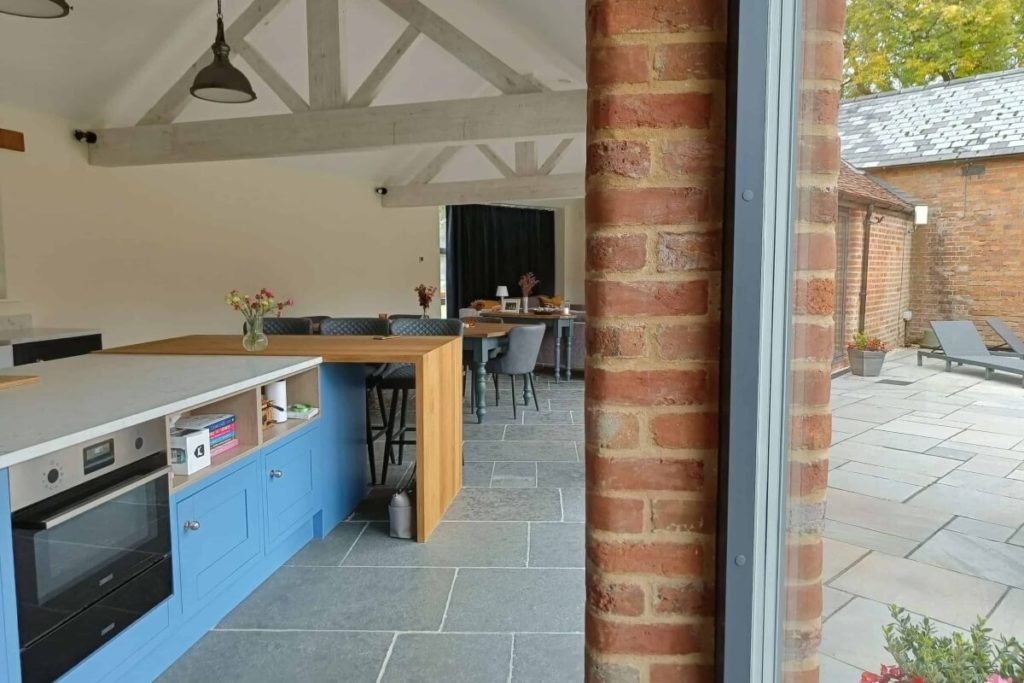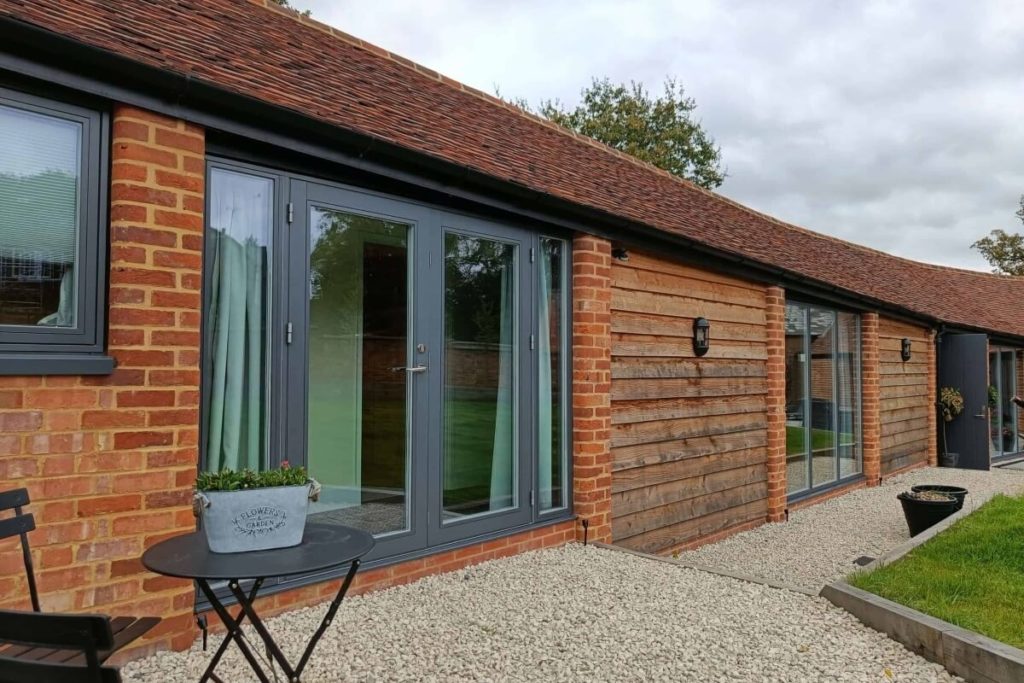Do barn conversions need planning permission?
Do barn conversions need planning permission? In some form yes. This particular one (above) was obtained via Prior Approval and then a further application for ‘Operations and Development in Association with Prior Approval’ – bit of a mouthful that one! If the barn is listed or in a conservation area (like the one pictured below – you can read more about that one here) then you will need to use the planning permission route and it will be more complex. But do all barn conversions need planning permission?
Deadline of 3 years to complete the build!
In general, we find that a full planning application is the best route as it gives you more flexibility and longer to complete the build. Permitted Development or Prior Approval insists that you finish building within 3 years of gaining permission.
Listed barn or conservation area? Class Q is not for you.
Barns that are not listed or in a conservation area can try the permitted development or prior approval option.
We find that Class Q is quite limiting but can be useful to test in principle.
With most barn conversions we opt for a pre-application followed by a full planning application. This allows you to test ideas with the planners before making an application (that neighbours can see).
The advantage of planning permission over Class Q or Prior Approval (as it’s often called) is that it gives you 3 years to start building. Prior Approval insists that you complete building within 3 years. This can be tricky to achieve with builder timeframes and high workloads in the industry at the moment. It is also less attractive if you plan to sell.
Can I convert any barn into a dwelling?
Mostly the answer is yes if it is relatively intact, has three or more sides and was formerly used for agriculture. Equestrian use does not count as agricultural use. Despite this we have previously converted stables into dwellings or holiday lets. But not under Class Q.
What are the pitfalls of barn conversions?
See this blog for an in-depth list of things to be aware of. Or
Download our guide to avoid 7 costly mistakes on a barn conversion here.
Do you need planning permission to convert a barn into a house?
Yes, although some qualify under permitted development, you will need to apply for Prior Approval. This determines whether you can start building or if you need to provide further information to the council.
What about new-build?
Generally, as barns are situated in open-countryside, new-build is not an option. However, re-building former barns can occasionally be allowed with significant justification to the planning authority. For example, we obtained planning permission for this barn to re-build surrounding ‘hovels’ and turn them into living space and classic car workshops.
Do I need building regs for a barn conversion?
Yes definitely. It will need to be well insulated and comply with fire escape regulations amongst other things.
Retaining the barn character.
 It’s important to respect the agricultural history of a barn and not make it look too domestic. This means no dormers or porches. Extensions are mostly not allowed, but occasionally planners will allow a carefully designed agricultural themed extension.
It’s important to respect the agricultural history of a barn and not make it look too domestic. This means no dormers or porches. Extensions are mostly not allowed, but occasionally planners will allow a carefully designed agricultural themed extension.
There are two types of barn: –
Modern steel-framed barns with concrete and timber cladding and
Traditional barns with stone, brick or timber walls.
The traditional barns carry a regional flavour that you don’t see in volume housebuilding. This makes them attractive homes. Traditional barns make fantastic contemporary homes. The envelope provides a fantastic, textural base to work from. Then it’s up to you and your own personal taste for the interior. Some owners like to emphasise the traditional further with wooden trusses (restored or new insertions), others like an industrial look (with dark window frames and exposed steel. This aesthetic also works very well with modern barns and reflects the agri-industrial heritage. We are usually very inspired by the barn itself – it’s limits and opportunities – and enjoy combining that with individual quirks and tastes.
Some councils have made it very difficult to convert modern barns in the past. Read more here about why.
Working with planning restrictions to design a layout that works for you
Traditional barns tend to have the big cart door entrances and often planning limits on number of windows and sizing. This often dictates how the layout could work in the first instance. Modern steel-framed barns have a lot more flexibility. In both barn types you need to be clever about headroom around the eaves at first floor level. In this design we situated en-suites at half-landing height with storage underneath, so you walk down a few steps from the bedroom to access the en-suite. Typically barns are also long and fairly narrow, this reduces the bedrooms you can have at first floor level due to the headroom required for a corridor.
We absolutely love barns and would be keen to chat with you about yours. Please do get in touch with us here. Or sign up for our newsletter or follow us on instagram. Both contain more barn inspiration!


